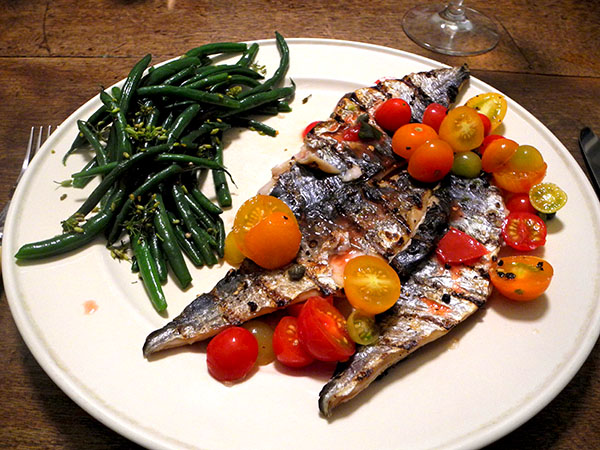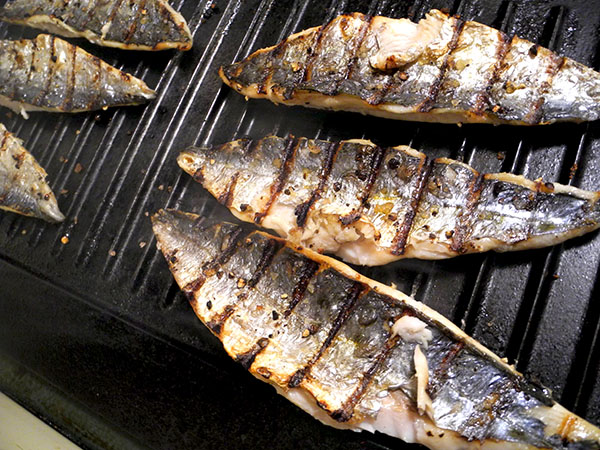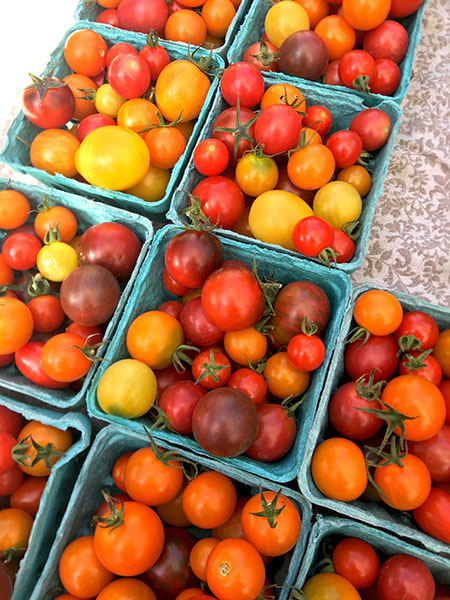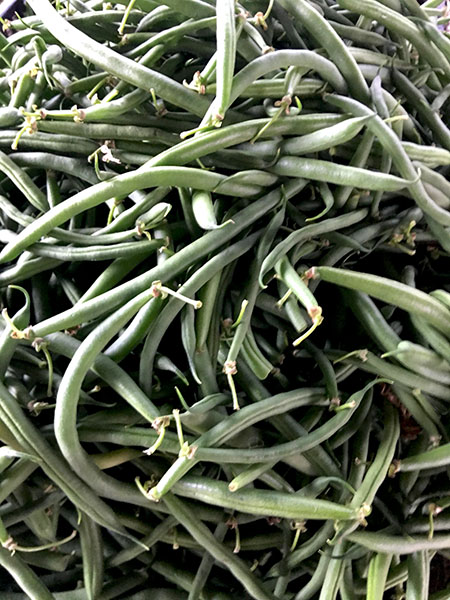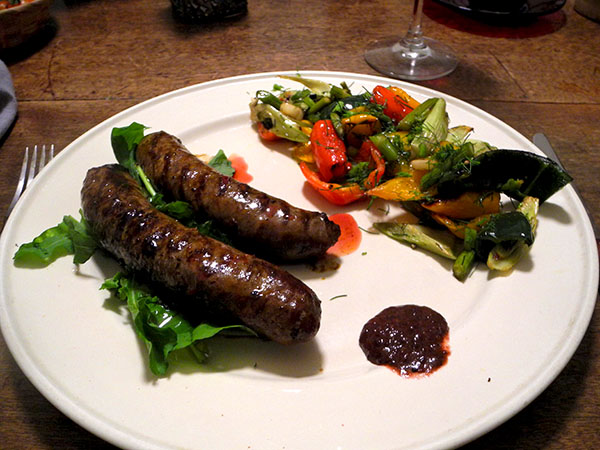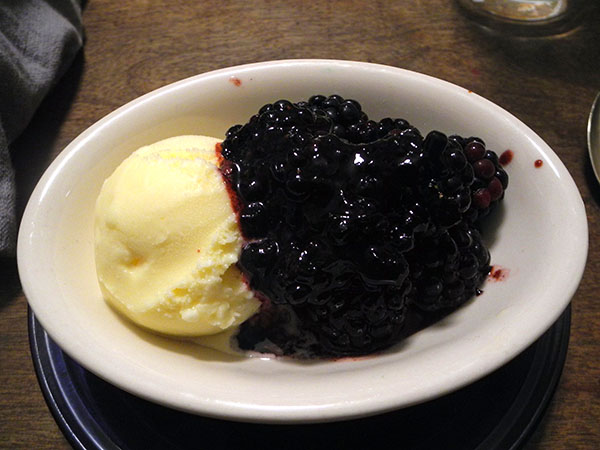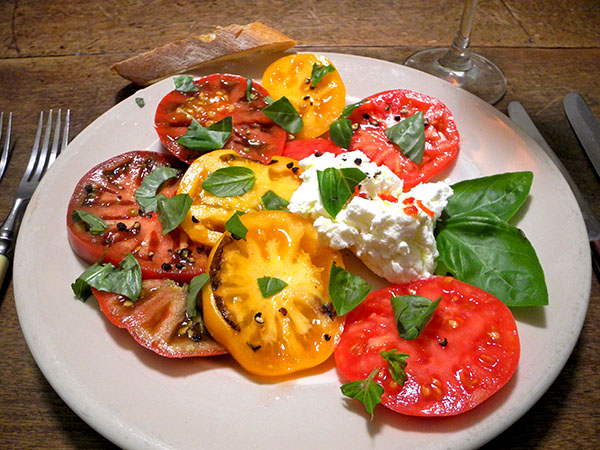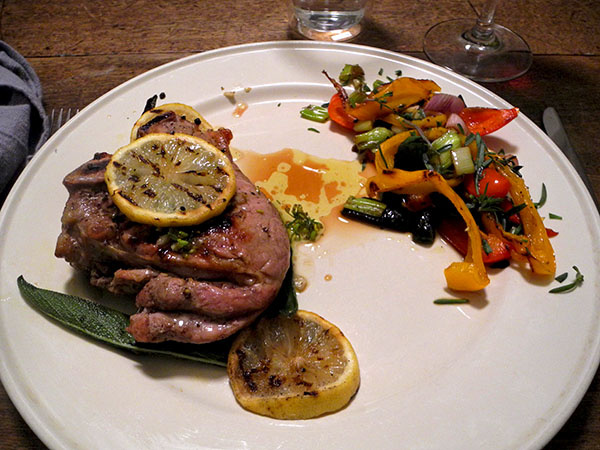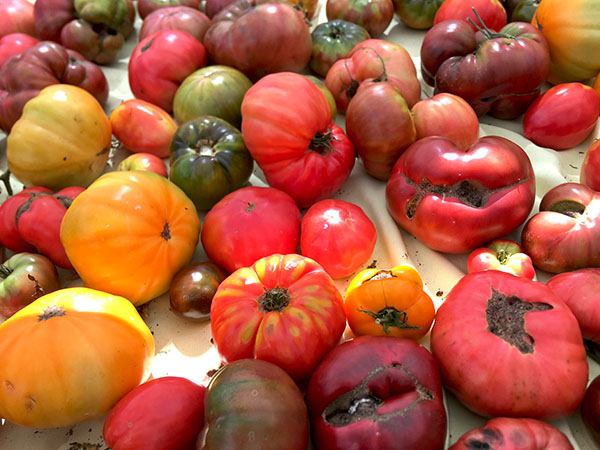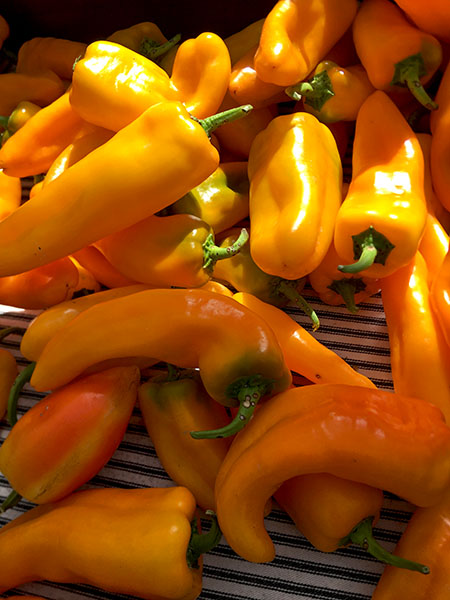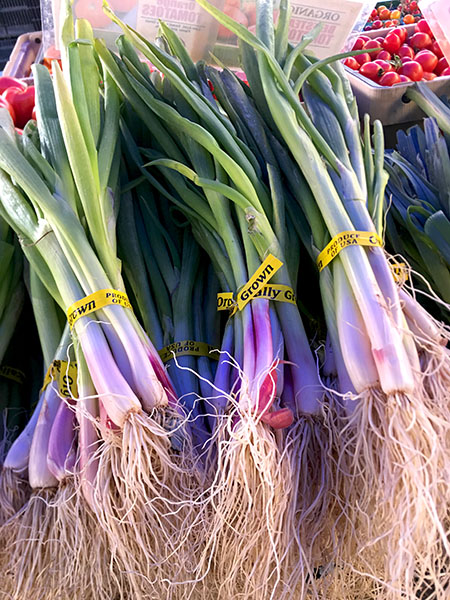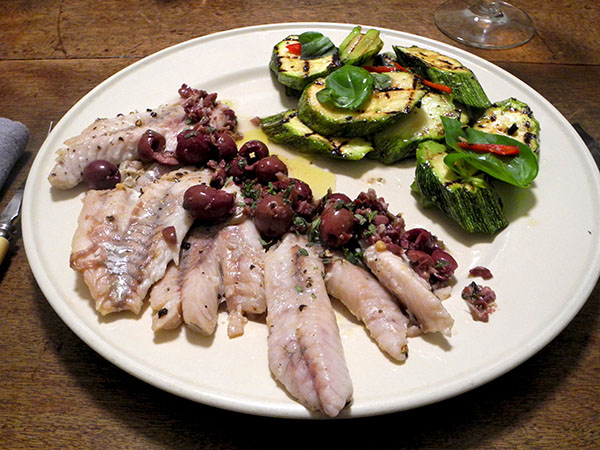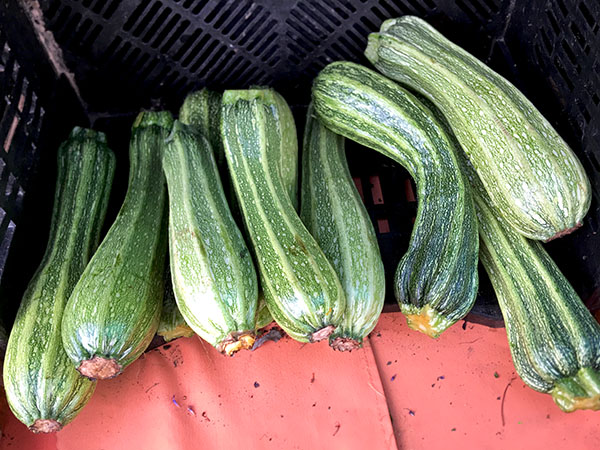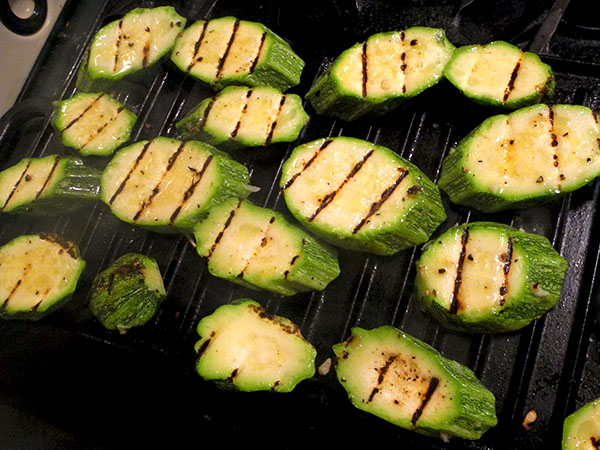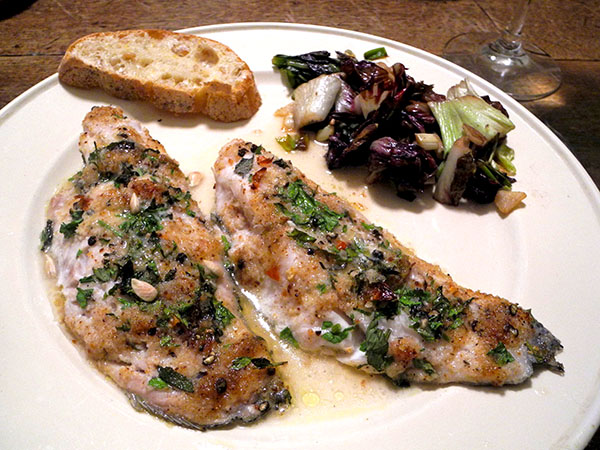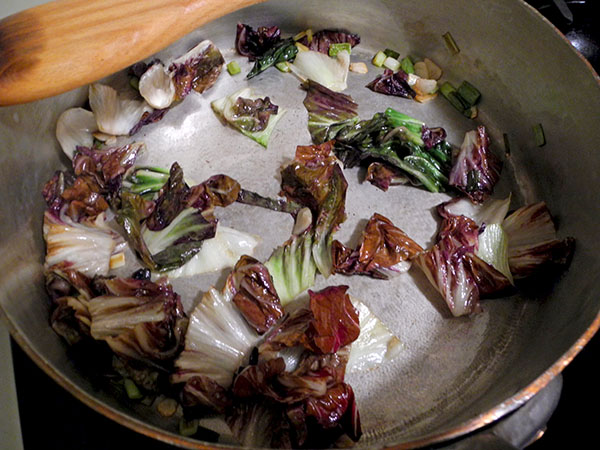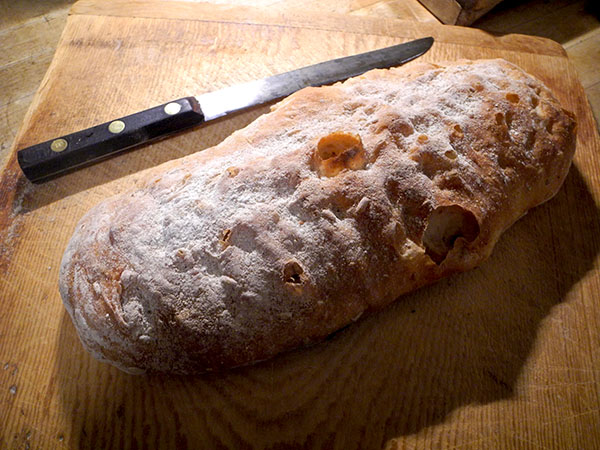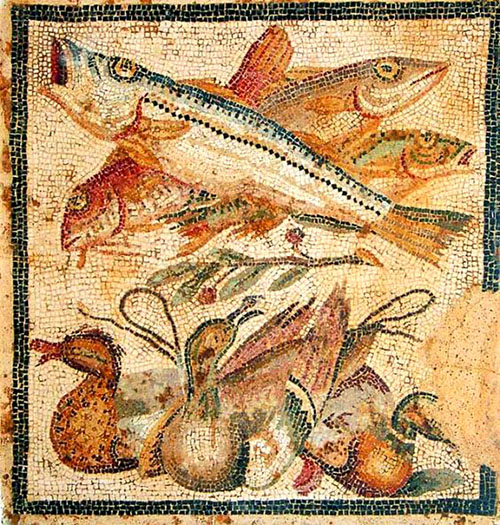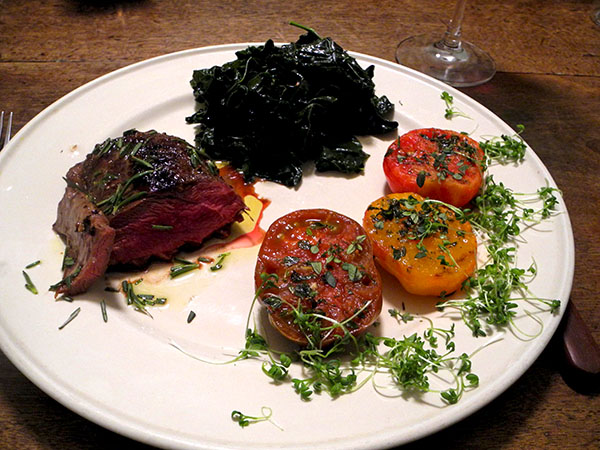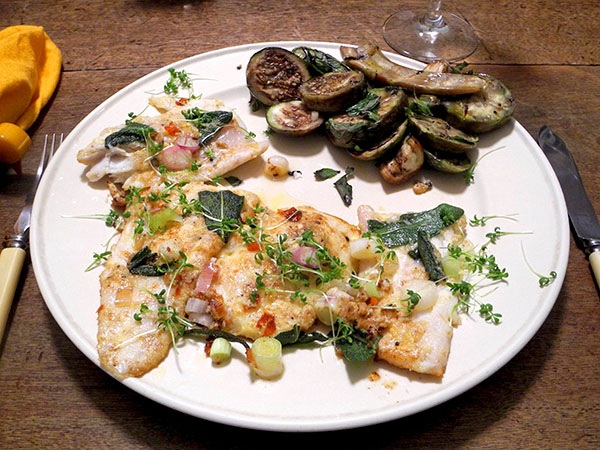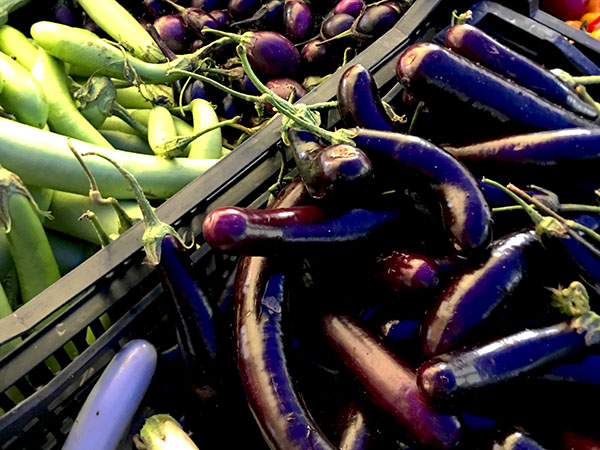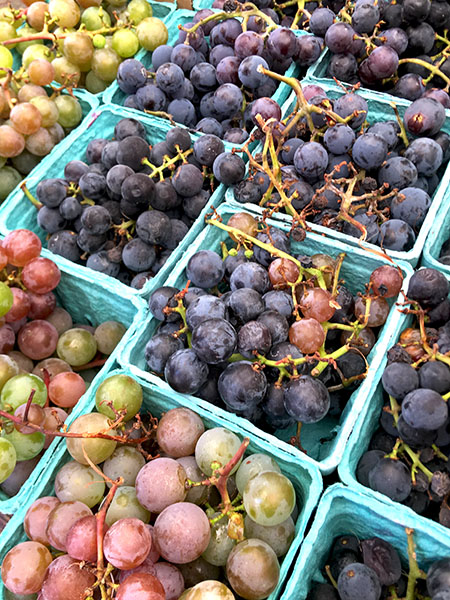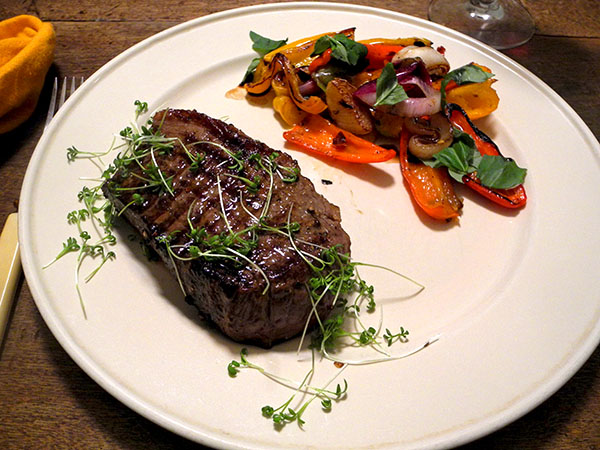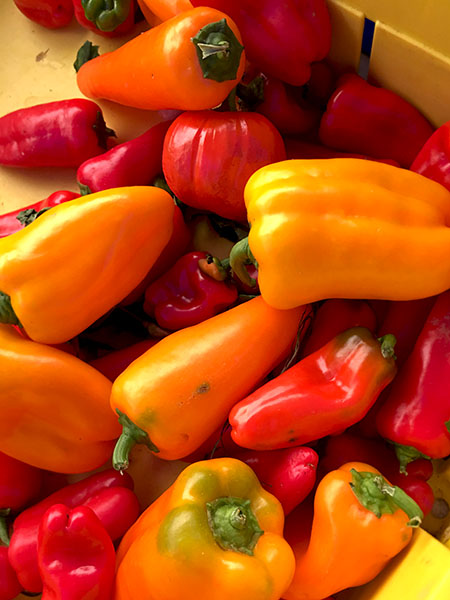
There were 4 at dinner again. The first course repeated the one served the last time, with a tweak from tradition in the insalata Caprese tomato choices.
Also as with that meal, there would be 3 courses, and I was again determined to make the main course something that could be prepared easily enough for me to be a part of the conversation even before we sat down.
When I need to cook enough for 4 people, many fish entrées (and seafood was virtually a given, especially since it was summer) take up an area larger than the surface of any of my pans. The best solution is to pick a fairly thick fish, like tuna or swordfish, or…
Once I spotted the beautiful bucket of striped bass (‘striper’) nestled in a tub of ice at the fishmonger’s stall that afternoon, I knew I had half of my main course picked out.
This great, most American of fish had threatened to disappear from our waters only 30 years ago, but was rescued by the heroic efforts of many good people, mostly fishers, during what some call the ‘Striper Wars’.
This is the view I had of the bass at the fishmonger’s (the clarity of the image is slightly obscured by the scratched plexiglas hinged lid of the tub).
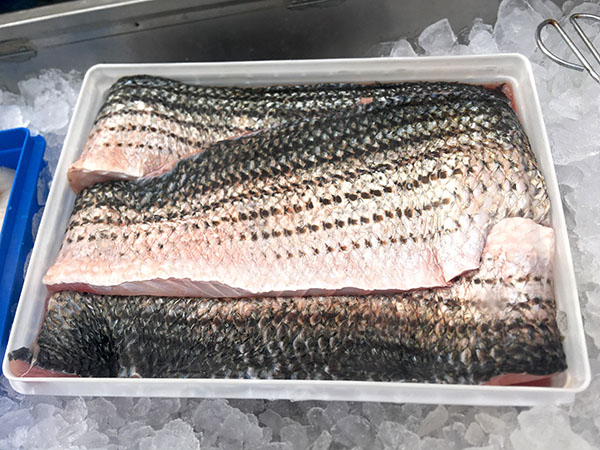
As in the week before, I picked the vegetable for its simplicity, and especially for the fact that it could be prepared ahead of time (in the end however I didn’t actually do it in advance). Also, Barry loves Tuscan kale.
We started, as usual, with breadsticks and a ‘sparkling’, this time a very nice French un-champagne.
The antipasto was an insalata Caprese [see image at the top], which always takes longer to assemble than I expect it to, but it’s worth it every time, since I only venture it when the ingredients are the best and freshest.
- the salad was assembled with sliced heirloom tomatoes from Cherry Lane Farms LLC, and a few halved sun gold cherry tomatoes from Windfall Farms, arranged on 4 plates, alternating with slices of some very fresh ‘mozzarella classica’ from Eataly and leaves of fresh basil from Stokes Farm, sprinkled with Maldon salt and coarsely-ground Tellicherry pepper, drizzled with a great Puglian olive oil, Alce Nero DOP ‘Terra di Bari Bitonto’ from Eataly
- slices of ‘Pane Paesano’ (unbleached, unbromated wheat flour, water, salt, yeast) from Hill Bakehouse of Gansevoort, NY, at the bakery’s Union Square Greenmarket Saturday stall
- the wine was a California (Sonoma) white, Scott Peterson Rumpus California Sauvignon Blanc 2016, form Naked Wines
The main course plates looked simple, and everything actually was pretty simple.
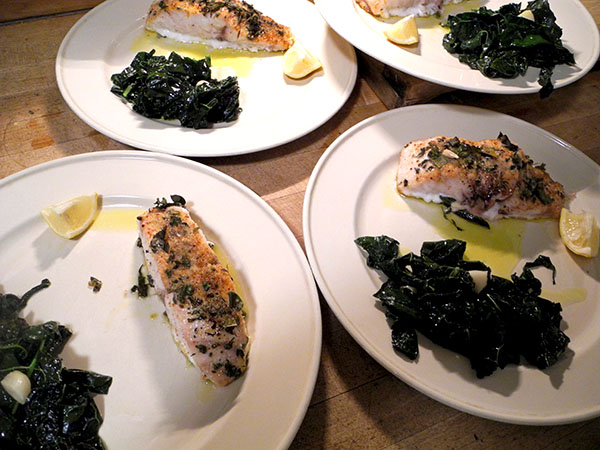
If there was any complexity in the preparation of the bass, it was only the number of herbs I tossed on top. I knew ahead of time what I was going to do, cobbling it up on my own, with the intention of letting the fish itself be the star. The oven timing was unknown territory however; in the end I used the ‘insert sharp knife in center’ and ‘bounce finger on top’ tests.
Yes, there was an oven involved. I try to avoid turning it on in warm weather, but it would mean less stress, and last night it was pretty mild; there was even a breeze, and we sat at the table in the gallery dining table, away from the kitchen.
The addition of homemade breadcrumbs was an impulse, and it is certainly optional. I was probably thinking I’d like the aesthetic, and the protection that such a coating might offer. Whatever.
This is the bass on the kitchen counter..
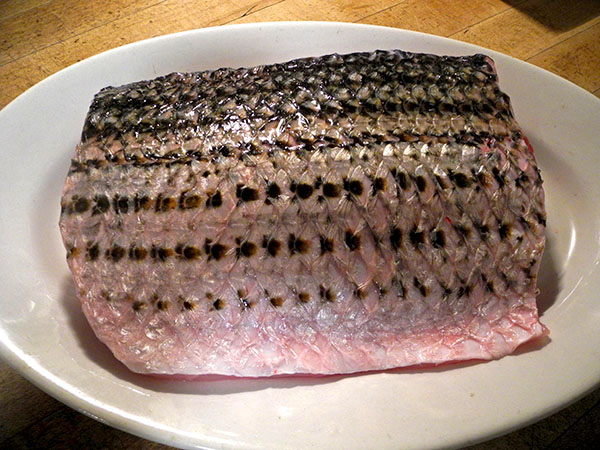
..and this is the pan as it was about to be placed in the oven, but before the breadcrumbs.

- one thick Striped Bass fillet (a total of 28 ounces for 4 of us) from P.E. & D.D. Seafood, washed, drained, brought to room temperature, divided into 4 equal sections top to bottom, arranged skin side down on the bottom of a ceramic pan resting on a coating of about 2 teaspoons of olive oil, scattered with a mixture of fresh herbs (oregano from Norwich Meadows Farm; thyme from Stokes Farm; sage and peppermint form Phillips Farm; and lovage from Keith’s Farm) plus one partially-crumbled bay leaf, purchased while fresh, from Westside Market [alternatively almost any fresh herb or combination of herbs could be used], sea salt, freshly-ground Tellicherry pepper, the bass sections sprinkled with some homemade dry bread crumbs and drizzled with a little olive oil, the pan placed in a 425º oven for approximately 25 minutes, removed when done and arranged on the plates, squeezed with the juice of an organic lemon from Whole Foods and drizzled with olive oil
The vegetable served with the fish was one of our favorite greens, and it couldn’t be less complicated to prepare.
- more than one bunch of cavolo nero (also known as lacinata, black kale, or Tuscan kale) from Paffenroth Farms, wilted with olive oil and 4 halved large Rocambole garlic cloves from Keith’s Farm, the garlic first heated in the oil until they had became pungent, seasoned with sea salt and freshly-ground Tellicherry pepper, arranged on the plates and drizzled with olive oil
The dessert was berries and cream, ice cream.
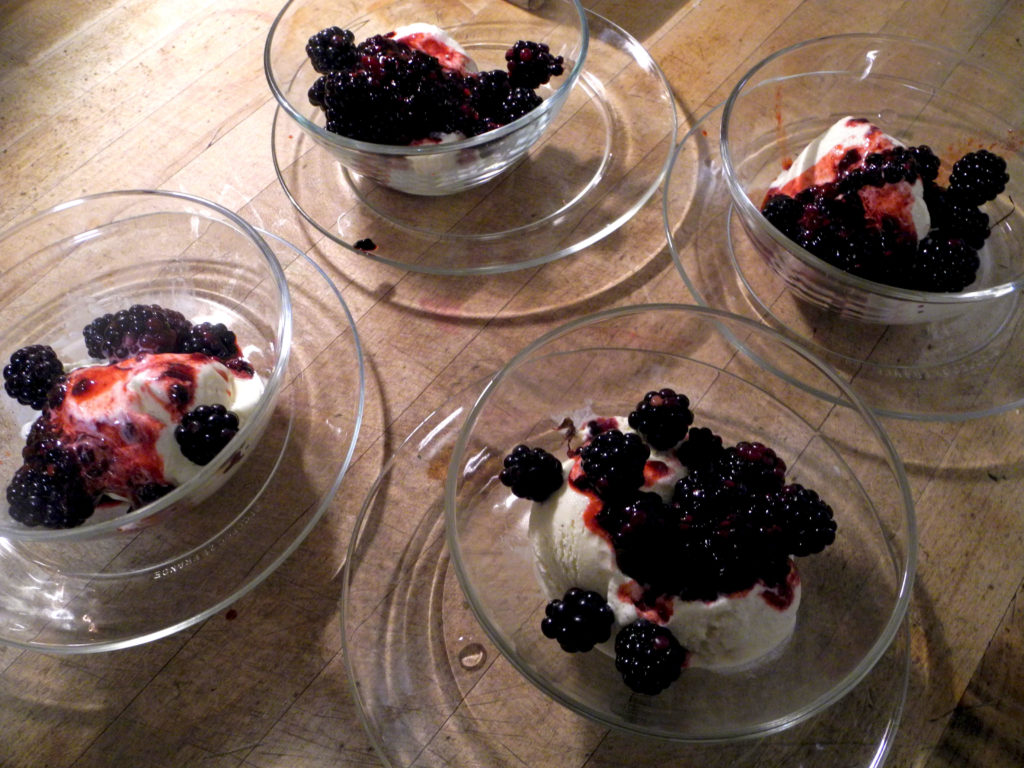
- blackberries from Locust Grove Orchards, some of them mashed with a little turbinado sugar and a couple teaspoons of Toschi Orzata Orgeat syrup to make a self-sauce, the berries scattered on top of scoops of Brooklyn-made Van Leeuven vanilla ice cream from Whole Foods Market, the sauce drizzled over ice cream and berries
